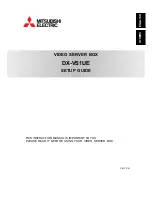
_____________________________________________________________________
724-746-5500 | b lackb o x.co m
Page 35
Chapter 4
Serial Port, Host, Device & User Configuration
SERIAL PORT AND NETWORK HOST
Introduction
The Black Box
console server
enables access and control of serially attached devices and network
attached devices (
hosts
). The
Administrator
must configure access privileges for each of these devices,
and specify the services that can be used to control the devices. The
Administrator
can also set up new
users and specify each user’s individual access and control privileges.
This chapter covers each of the steps in configuring hosts and serially attached devices:
Configure Serial Ports
—setting up the protocols to be used in accessing serially-connected devices.
Users & Groups
—setting up users and defining the access permissions for each of these users.
Authentication—
covered in more detail in Chapter 9.
Network Hosts
—configuring access to network connected devices (referred to as hosts).
Configuring Trusted Networks
—nominate user IP addresses.
Cascading and Redirection of Serial Console Ports.
Connecting to Power (UPS PDU and IPMI) and Environmental Monitoring (EMD) devices
.
Managed Devices—
presents a consolidted view of all the connections.
4.1
Configure Serial Ports
To configure a serial port, you must first set the
Common Settings
(the protocols and the RS-232
parameters (such as baud rate) that will be used for the data connection to that port.
Select what mode the port is to operate in. You can set each port to support one of five operating
modes:
1)
Console Server Mode is the default and this enables general access to serial console port on the
serially attached devices.
2)
Device Mode sets the serial port up to communicate with an intelligent serial controlled PDU,
UPS, or Environmental Monitor Device (EMD).
Network
connected
(HTTP,
HTTPS, IPMI,
ALOM, SOL,
VNC, RDP,
SSH, X.Telnet)
Serial
connected
(Linux,
Solaris, Windows
UNIX, BSD servers)
VoIP PBX switch,
router, fi rewall,
power strip, UPS
















































